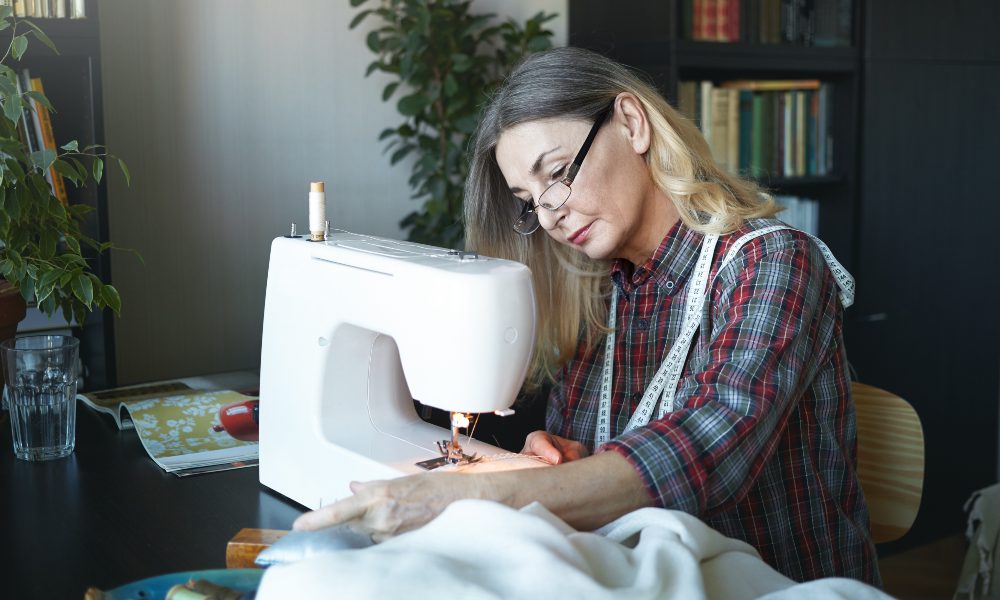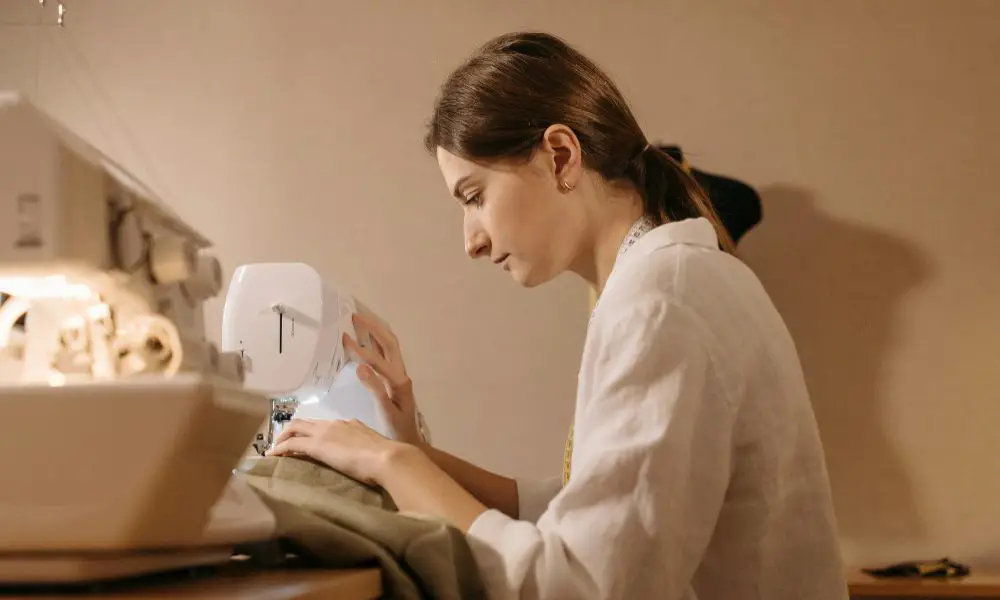Are you tired of uneven stitches ruining your sewing projects? Improper thread tension could be the culprit! Don’t let this frustrating issue dampen your sewing enthusiasm any longer. Dive into this comprehensive guide to learn how to adjust tension on sewing machine and bid farewell to those pesky tension woes.
Why is Thread Tension Important?
Impact on stitch quality
Tension is the key to achieving impeccable stitch quality on your sewing machine. When the tension is perfectly balanced, the upper thread and bobbin thread interlock neatly in the middle of the fabric, creating a smooth, professional-looking stitch. However, if the tension is off, it can lead to a myriad of issues, such as puckering, thread breakage, and unsightly looping on either side of the fabric.
Preventing puckering and thread breakage
Incorrect tension is often the root cause of puckering and thread breakage, two common nightmares that can ruin even the most meticulously planned sewing patterns. By learning how to adjust tension on sewing machine properly, you can bid adieu to these frustrating problems and enjoy a seamless sewing experience.
Signs of Incorrect Tension
Before diving into the tension adjustment process, it’s crucial to recognize the telltale signs of improper tension. Here are a few indicators to watch out for:
Top thread looking loopy
If you notice loops or bunched-up thread on the top side of your fabric, it’s a clear sign that the top tension is too loose. Conversely, if the bobbin thread is visible on the top side, it indicates that the top tension is too tight.
Bottom thread showing on top
When the bobbin thread starts peeking through on the top side of your fabric, it’s a telltale sign that the bobbin tension is too loose. This issue can lead to unsightly stitches and potentially compromise the integrity of your sewing project.
Seam puckering
Puckering or gathering of fabric along the seam line is another common symptom of tension issues. This problem can occur when either the top tension or bobbin tension is too tight, causing the fabric to bunch up and distort the stitches.
Step-by-Step Guide to Adjusting Tension
Now that you’ve identified the signs of improper tension, it’s time to roll up your sleeves and adjust the tension on your sewing machine. Follow these step-by-step instructions to achieve perfectly balanced stitches:
1. Understanding the Tension Discs
Before you begin, it’s essential to understand the two main components that control tension: the top tension and bottom tension.
Top tension
The top tension, also known as the needle thread tension, is controlled by the tension disc or tension dial located on the top of your sewing machine. This disc regulates the tension of the needle thread, which is the thread you can see on the top side of your fabric.
Bottom tension
The bottom tension, or bobbin tension, is controlled by the bobbin case inside your sewing machine. This component regulates the tension of the bobbin thread, which is the thread that interacts with the needle thread from the bottom side of the fabric.
2. Test the Tension

Before making any adjustments, it’s a good idea to test the current tension settings on a scrap piece of fabric. Sew a few straight stitches and carefully examine the stitches on both sides of the fabric.
Sewing on a scrap fabric
Use a lightweight fabric scrap to test the tension, as heavier fabrics can sometimes mask tension issues. Sew a few lines of straight stitches and observe the results.
Checking the bobbin case tension
While you’re testing the tension, don’t forget to check the bobbin case tension as well. Remove the bobbin case and hold it vertically with the bobbin thread hanging down. Give the thread a gentle tug – it should release the thread slightly but not unwind completely.
3. Adjust the Top Tension
If your test stitches reveal issues with the top tension, it’s time to make adjustments. Most sewing machines have a tension dial or knob that allows you to tighten or loosen the top tension.
Tightening the tension
If your top thread is looping or bunching, you’ll need to tighten the tension. Turn the tension dial or knob towards a higher number to increase the top tension.
Loosening the tension
Conversely, if the bobbin thread is visible on the top side of your fabric, you’ll need to loosen the top tension. Turn the tension dial or knob towards a lower number to decrease the top tension.
4. Adjust the Bobbin Case Tension
If your test stitches indicate issues with the bobbin thread tension, it’s time to adjust the bobbin case tension.
Holding the bobbin case vertically
Remove the bobbin case from your sewing machine and hold it vertically with the bobbin thread hanging down.
Turning the tiny screw
On the side of the bobbin case, you’ll find a tiny screw or tension regulator. Turn this screw clockwise to tighten the bobbin tension or counterclockwise to loosen it. Make small adjustments and retest the tension on a scrap fabric until you achieve the desired results.
5. Retest and Fine Tune
After making adjustments to the top tension and bobbin tension, it’s time to retest your stitches on a scrap fabric. If the tension still isn’t quite right, make further adjustments as needed until you achieve balanced stitches that look perfect on both sides of the fabric.
Tips for Maintaining Proper Tension
Once you’ve mastered the art of adjusting tension on your sewing machine, it’s important to take steps to maintain that perfect tension. Here are some helpful tips:
Using correct thread and needle
Always use high-quality thread and needles that are appropriate for the fabric you’re sewing. Incorrect thread or needle sizes can contribute to tension issues.
Rethreading after tension adjustment
After making tension adjustments, it’s a good idea to rethread your sewing machine completely. This ensures that the thread is properly seated in the tension discs and guides.
Cleaning tension discs regularly
Over time, lint and debris can accumulate on the tension discs, affecting their performance. Make it a habit to clean the tension discs regularly with a soft brush or compressed air.
FAQs
Why is proper thread tension important on a sewing machine?
Proper thread tension is crucial for creating strong, neat stitches. If the tension is too loose, the stitches will be loopy and can easily unravel. If it’s too tight, it can cause puckering, thread breaks, skipped stitches, and damage to the fabric.
How can I tell if my sewing machine’s tension needs adjusting?
Signs that tension may need adjusting include loopy or uneven stitches on the top or bottom of the fabric, puckered seams, or the thread breaking frequently.
How do I adjust the top thread tension on my sewing machine?
Most machines have a numbered tension dial near the thread path. Start with the tension set in the middle range (around 4-5). Then make small adjustments up or down while testing on a scrap fabric until the stitches look balanced on both sides.
How about adjusting the bobbin tension?
Bobbin tension is usually set at the factory, but can get disrupted over time. Consult your manual, but generally you can adjust the tiny screw on the bobbin case with a small screwdriver while holding the thread tail.
Conclusion
Achieving professional-looking stitches with proper tension is a game-changer in the world of sewing. By following this comprehensive guide on how to adjust tension on sewing machine, you’ll be well-equipped to tackle any tension issues that may arise. Remember, patience and practice are key – with a little trial and error, you’ll soon be creating flawless, evenly balanced stitches on all your sewing projects.
What tension issues have you faced while sewing, and how did you resolve them? Share your experiences and tips in the comments below!
***
Main image: pexels




